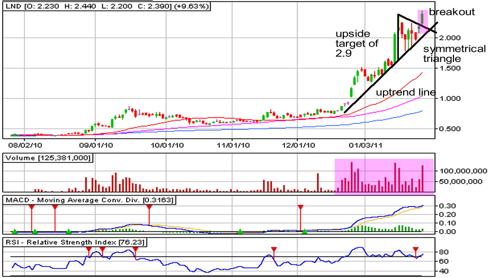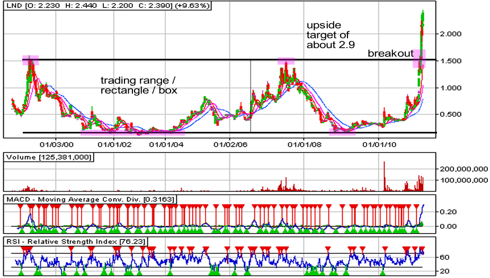By Sara Nunnally, Editor, Smart Investing Daily, taipanpublishinggroup.com
You know those “Talk to Chuck” commercials with the “animated” interviews with investors disappointed with their brokers? Well, there’s one with a guy who says:
I mean, these financial services companies are still talking about retirement like it’s some kind of dream. It’s either this magic number I’m supposed to reach, or it’s beach homes, or it’s starting a vineyard… Come on! Just help me figure it out in a practical, “let’s make this happen” kind of way. A vineyard? Give me a break.
These Charles Schwab ads are catchy, and they inspire people to get back in the trenches and work toward a realistic retirement.
(Note: The mention of Charles Schwab is in no way an endorsement of the company or its services.)
What will that retirement look like for you?
No doubt you’ve feared that you’ll have to work until you die… I asked our Taipan Global Summit attendees in Las Vegas this year if they were still scared of the economic crisis we’re not quite over. Nearly everyone raised their hands.
And to be honest, there are certain sections of the economy that still look awfully grim, like the housing market and unemployment. It’s enough to make me a little leery of the market rally.
In fact, on Monday, I was talking to Jordan Goodman, host of The Money Answers Show on Voice America about Barbarians of Wealth. During one of our breaks, Jordan noted that the Dow was just about to hit 12,000. Our back and forth went a bit like this:
Jordan: “As we’re talking the Dow’s about to hit 12,000.”
Me: “Yeah, it’s a bit scary.”
Jordan: “I take it you don’t trust this rally.”
Me: “No, I don’t. But you can’t really fight it, can you? We’ve been telling our readers that if you’re going to be bullish, you should also be hedged.”
The long and the short of it is that despite the major comebacks in the market, there are still some serious problems that will take years to fix. And that means your retirement could still be at risk.
(Investing doesn’t have to be complicated. Sign up for Smart Investing Daily and let me and my fellow editor Jared Levy simplify the stock market for you with our easy-to-understand investment articles.)
Protect Your Retirement
One of the ways some investors are working to protect their retirement is by looking abroad. I’m not talking about investing in international stocks, though we do advocate a well-rounded, diversified portfolio that includes international companies.
I’m talking about retiring overseas.
This has become more and more popular. Boomers Abroad, an online community of baby boomers who were “seeking a new life,” notes that the number of Americans and Canadians living abroad will double in the next 10 years.
Right now there are about 7 million folks doing just that…
And as I look out my window on this cold Wisconsin winter morning, with overcast skies and eight inches of snow on the ground, I can’t help but be envious of those folk who have found warmer weather and beach homes that the “Talk to Chuck” advertisement is trying to steer us away from.
But let’s take a look at that idea for a minute. Maybe you can’t afford a beach home in the popular and exclusive North Palm Beach, Fla. Or maybe you can, but you don’t want to blow your entire retirement fund on a $4.2 million home.
But take that same idea — beach living — and transplant it to another country, with even more amazing views, and the potential for your retirement home to double in value.
That’s hard to find anywhere in the United States… but not in Nicaragua.
Let me explain.
Rancho Santana is a residential community set on rolling hillsides and dramatic cliffs rising away from the Pacific Ocean. Located just 50 miles north from the Pacific border of Costa Rica in the southwest corner of Nicaragua, this stunning 2,700-acre reserve boasts more than two miles of Pacific Ocean coastline and five distinct beaches, three of which are accessed only by this private gated community.
It’s your own piece of heaven. At Rancho Santana you can enjoy world-class oceanfront living and dining, spectacular beaches, nature trails, an authentic horse and ranch atmosphere, and breathtaking sunsets.
Rancho Santana was the brainchild of Agora, Inc., of which Taipan Publishing Group is a subsidiary. Bill Bonner, founder and president of Agora, wanted a place he could travel to, rest at and enjoy… and eventually retire to, but a place that wasn’t typical in any sense of the word.
He found his retirement paradise in Rancho Santana. Rancho Santana is simply beautiful. Just listen to what others have to say:
“Rancho Santana is simply stunning.”
Forbes’ 2009 Retirement Guide
“Inexpensive, beautiful land and a cost of living at a fraction of what is in the U.S.”
Christian Science Monitor
“The ease of purchasing land, tax incentives, low crime and a laid-back lifestyle on a gorgeous stretch of coast make it appealing.”
The Los Angeles Times
Over 50 homes have already been built, and 24 villa units are under construction. The terrain is such that different homesites can capture varying views of the ocean, valley, sunsets and horses to suit your personal tastes. A master association and various sub-associations exist so that you can be assured that high and consistent standards of quality will be maintained.
But this kind of detail, and lifestyle descriptions can’t compare to actually being there. That’s why I’m telling you about Rancho Santana.
The community is holding a “chill weekend” for potential residents to come and see what Rancho Santana is all about… and what your potential seaside retirement home could be like. Of course, these “chill weekends” generate a lot of interest.
That’s why we have to limit the amount of people who can sign up.
Currently, only our Millionaire’s Circle members can take advantage of Rancho Santana’s “chill weekend.” If you’re already a Millionaire’s Circle member, you can send Sandy Franks, our executive publisher, an e-mail about your interest in attending. Email to: [email protected].
If you’re not a Millionaire’s Circle member, you can learn more about becoming one here. This Rancho Santana “chill weekend” is just the tip of the iceberg when it comes to Millionaire’s Circle perks and exclusive access.
So check out what this service can offer you.
Editor’s Note: Millionaire’s Circle members get unprecedented access to all Taipan Publishing Group services, conferences and “White Glove” events. They get premium reports and research papers, and are exclusive invitees to our investment “Boot Camps.” The service is designed for just one purpose — to make you money. You have the power of the whole Taipan think-tank behind you, every step of the way.
I sincerely urge you to consider making the Millionaire’s Circle a part of your future wealth and prosperity.
P.S. How to get a cut of “Mr. Le’s” million-dollar retirement… One senior Communist official is poised to start collecting a million-dollar retirement check, as early as tomorrow. Act immediately and you could ride his coattails for a 400% gain. Learn more about this investment opportunity from American Wealth Underground.
About the Author
Sara is Co-Editor of Smart Investing Daily. As Senior Research Director and global correspondent, Sara Nunnally’s diverse resume includes studies in art history, computer science and financial research. She has appeared on news media such as Forbes on Fox, Fox News Live, and CNBC’s Squawk Box, as well as numerous radio shows around the country.
As Senior Research Director, global correspondent and co-editor of Smart Investing Daily, Sara has traveled all over the world in search of the best investment opportunities to recommend to her readers, be they in developed economies like France and Italy, in emerging markets like the Czech Republic and Poland, or in frontier terrain like Vietnam and Morocco. Her unique “holistic” approach of boots-on-the-ground research has given her an edge in today’s financial marketplace as she searches for the next investment opportunities in hot sectors like alternative energy, currency markets and commodities.



